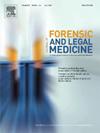日本传统调味品“味噌”加速了血迹颜色的改变:1966年一起谋杀案的无罪证明
IF 1.2
4区 医学
Q3 MEDICINE, LEGAL
引用次数: 0
摘要
1966年,一名味噌公司高管和他的家人被谋杀,他们的房子被放火焚烧。一名公司员工在案发两个月后被捕。他的名字是Iwao Hakamada先生,58年后,他是一名职业拳击手。1967年,检方辩称,在味增油罐中发现的血迹斑斑的衣服属于被告。法院随后接受了这一证据,于1968年判处他死刑。1976年和1980年,高等法院都维持了原判。2014年,在辩方提出请求后,地方法院下令重审,并释放了他,尽管他已经被判死刑,理由是怀疑血迹在味噌中浸泡了一年多后仍呈红色。然而,2018年,高等法院推翻了下级法院的重审判决。最高法院审查了该案件,并在两年后将其退回高等法院重新审理,强调当时尚未充分审查血液变色问题。辩方请来我们解释味噌中衣物的血迹变色机理。我们进行了实验,研究在味噌中干燥和/或在类似条件下血液和血迹颜色的变化。在低pH值和/或高盐浓度条件下观察血液和血迹的颜色4天,以确认血液和血迹在味噌中不会保持红色超过一年。结果表明,在模拟味噌的环境后,血液和血迹在几天内失去了红色,变成了深褐色和/或黑色。此外,由于暴露在空气中的氧气中氧化,普通的干燥血迹会在几周内变成棕色。这些结果表明,作为有罪判决关键证据的5件血迹斑斑的衣服是在被发现之前准备好的,而不是在谋杀发生后被藏在味噌罐里。我们向高等法院提交了证明藏在味噌里1年多的衣服上的血迹不可能是红色的科学资料,并于2023年和2024年作为专家被传唤到高等法院和地方法院进行了证词。”法院作出了无罪的最终判决,结束了他在死囚牢房里56年的生活。这是一个罕见的案件,法医调查结果证明了58年前发生的错误定罪。虽然这项研究为味噌和其他含盐或发酵食品相关的法医环境提供了新的见解,但局限性包括受控的实验室环境和对pH值和盐浓度的关注。这些结果突出了法医从业者在血液证据评估中考虑食物来源环境的必要性。本文章由计算机程序翻译,如有差异,请以英文原文为准。
Japanese traditional seasoning “miso” accelerates alteration of bloodstain color: Proof of innocent for a murder committed in 1966
In 1966, a miso company executive and his family were murdered, and their house was set on fire. A company employee was arrested two months after the crime. His name is Mr. Iwao Hakamada who was a professional boxer accomplishing innocent 58 years later. In 1967, the prosecution argued that bloodstained clothing found in a miso tank belonged to the accused. The court then accepted this evidence, sentencing him to death in 1968. The sentence was upheld by higher courts in 1976 and 1980. In 2014, after a plea from the defense, the district court ordered a retrial and released him despite his having been on death row, citing doubts about the bloodstain remaining reddish after being submerged in miso for over a year. However, in 2018, the high court overruled the lower court's verdict of opening a retrial. The Supreme Court reviewed the case and returned it to the high court for reconsideration 2 years later, emphasizing that the issue of blood discoloration had not yet been fully examined then. The defense team enlisted us to explain the bloodstain discoloration mechanism of clothing in miso. We conducted experiments investigating alteration of blood and bloodstain color by drying and/or under similar condition in miso. The color of blood and bloodstains was observed under low pH and/or high salt concentration conditions for four days to confirm that blood and blood stain could not remain reddish in miso for over a year. Results showed that the blood and bloodstain lost its redness and turned dark brown and/or blackish color in a few days after being in simulation of the environment found in miso. Furthermore, plain dried bloodstain would have turned brown in a few weeks due to oxidation from exposure to oxygen in the air. These results suggested that the five bloodstained articles of clothing, which were critical pieces of evidence for the guilty verdict, were prepared just before they were discovered, rather than having been hidden in miso tank after the murder. We submitted these scientific data to the high court demonstrating that the bloodstain of clothing hidden in miso for over a year could not have remained reddish, and were summoned as experts in 2023 at a high court and 2024 at a district court for a deposition. The court rendered a final verdict of not guilty, terminating his 56 years on death row. This case was a rare case in which forensic findings proved a wrongful conviction that had occurred 58 years earlier. While this study provides novel insight into miso- and the other salty or fermented food-related forensic contexts, limitations include a controlled lab setting and a focus on pH and salt concentration. These results highlight the need for forensic practitioners to consider food-derived environments during blood evidence evaluation.
求助全文
通过发布文献求助,成功后即可免费获取论文全文。
去求助
来源期刊

Journal of forensic and legal medicine
MEDICINE, LEGAL-
CiteScore
2.70
自引率
6.70%
发文量
106
审稿时长
57 days
期刊介绍:
The Journal of Forensic and Legal Medicine publishes topical articles on aspects of forensic and legal medicine. Specifically the Journal supports research that explores the medical principles of care and forensic assessment of individuals, whether adult or child, in contact with the judicial system. It is a fully peer-review hybrid journal with a broad international perspective.
The Journal accepts submissions of original research, review articles, and pertinent case studies, editorials, and commentaries in relevant areas of Forensic and Legal Medicine, Context of Practice, and Education and Training.
The Journal adheres to strict publication ethical guidelines, and actively supports a culture of inclusive and representative publication.
 求助内容:
求助内容: 应助结果提醒方式:
应助结果提醒方式:


